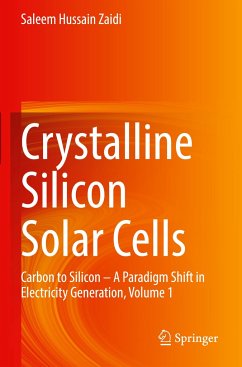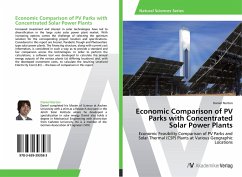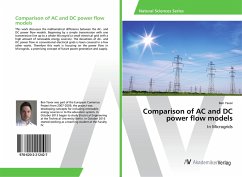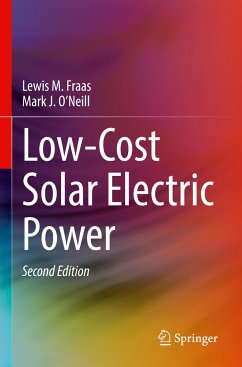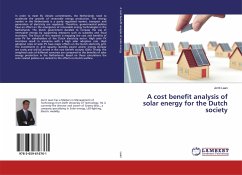
Comparison of Novel and State of the Art Solar Cells.
Review of current development in silicon solar cells
Versandkostenfrei!
Versandfertig in 6-10 Tagen
24,99 €
inkl. MwSt.

PAYBACK Punkte
12 °P sammeln!
This research work is based on the comparison of novel and existing state-of-the-art solar cells, focusing on the materials, methods of fabrication, life cycle (energy analysis), sustainability and cost. The technologies discussed in this research are silicon based solar cells (mono-crystalline, polycrystalline and amorphous), and non-silicon based solar cells (organic and in-organic). The main focus of this research work describes the physics of the new type of silicon based solar cell called heterojunction intrinsic thin-layer solar cell (HIT), which has been proven to be cheaper in producti...
This research work is based on the comparison of novel and existing state-of-the-art solar cells, focusing on the materials, methods of fabrication, life cycle (energy analysis), sustainability and cost. The technologies discussed in this research are silicon based solar cells (mono-crystalline, polycrystalline and amorphous), and non-silicon based solar cells (organic and in-organic). The main focus of this research work describes the physics of the new type of silicon based solar cell called heterojunction intrinsic thin-layer solar cell (HIT), which has been proven to be cheaper in production,sustainble and more efficient than the conventional solar energy cells. It is a combination of two different semiconducting materials, which are hydrogenated amorphous silicon and mono-crystalline silicon to create a p/n-junction.From literature, aluminium doped zinc-oxide (ZnO:Al) is usually used as the transparent conducting oxide, then followed by layers of p-type amorphous silicon (emitter), intrinsic amorphous silicon (passivator), n-type crystalline silicon (absorber), intrinsic amorphous silicons (passivator) and n-type hydrogenated amorphous silicon (back surface field.




